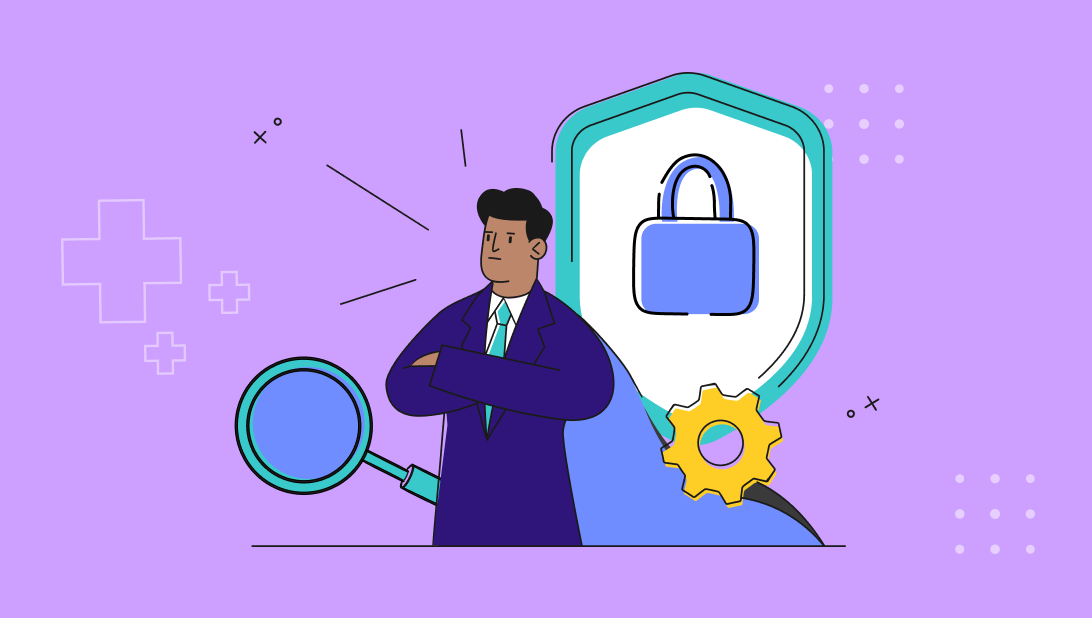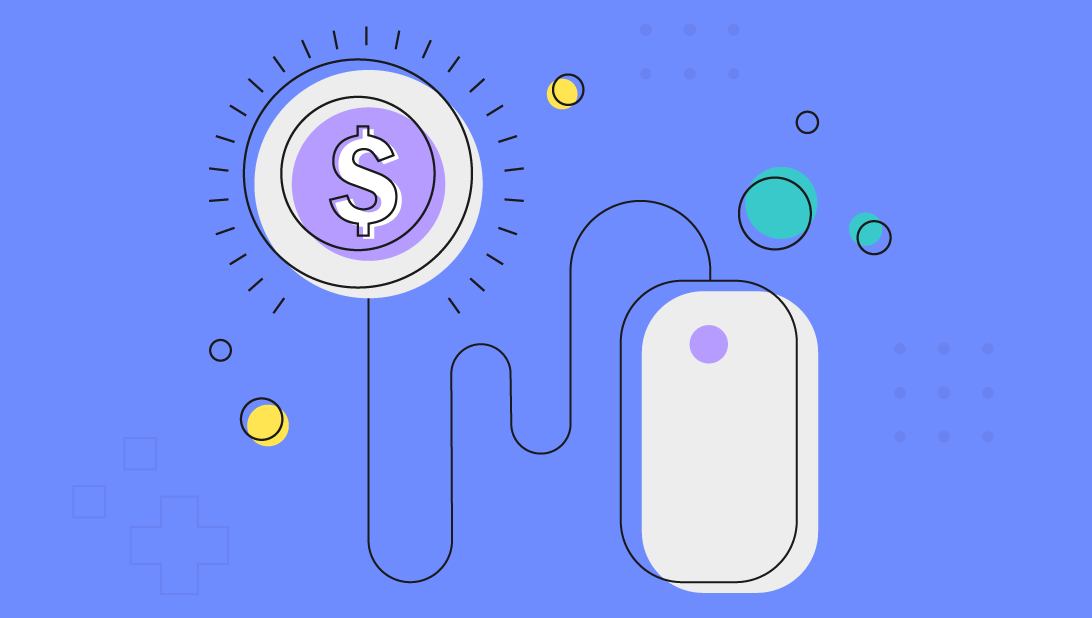



A sound B2B SaaS marketing strategy is the blueprint for attracting leads, converting them to customers, and retaining them for the long haul. A survey by Coschedule found that top marketers were 414% more likely to report success when they document their strategy.
An effective B2B SaaS marketing strategy must start with objectives that align with your business goals. Let’s examine what a well-planned strategy can do for you, the objectives you should set, and how to achieve them.
The subscription-based nature of a SaaS business model means that a B2B SaaS marketing strategy must not only attract and convert leads but also retain customers and increase their lifetime value. Here’s what a well-designed plan can do to help you achieve your revenue goals:
Attracting leads, nurturing relationships, converting prospects to customers, and retaining existing customers are activities essential for revenue growth and should be the objectives of any B2B SaaS marketing strategy. Here’s how to achieve them.
To acquire more customers, you must build brand awareness, get in front of high-quality leads, and gain your audience’s trust.
Search engine optimization (SEO) helps you get in front of a target audience actively researching a solution. While fast-evolving algorithms may seem intimidating, setting a solid foundation doesn’t have to be complicated.
Conduct keyword research to identify search terms your ideal customers use and incorporate them into your website content. Also, meet Google’s E-E-A-T (Experience, Expertise, Authoritativeness, and Trustworthiness) guidelines by creating original thought-leadership content to demonstrate your first-hand industry knowledge.
Authentic, well-written content that addresses your audience’s needs and concerns helps you win the SEO game and attracts leads to your website. It also allows you to build authority and strengthen your brand’s reputation in the industry.
The good news is that SaaS solutions often collect a wealth of customer data, allowing B2B SaaS marketing teams to convert the insights into fascinating content on market trends and user behaviors. You may create and promote white papers, infographics, blog posts, and more to attract your audience and encourage sharing.
Referral marketing is one of the most cost-effective ways of building trust and generating high-quality leads. To leverage the power of referrals in your B2B SaaS marketing strategy, make it easy for customers to tell others about your company.
Create a landing page where existing users can make referrals, add a call-to-action (CTA) on the software interface, and encourage customer-facing employees to ask for referrals. Also consider incentivizing referrals, but set detailed guidelines to reduce the risk of poor-quality leads.
The B2B SaaS sales cycle has become longer and more complex. You must build and maintain relationships with multiple stakeholders throughout the buyer journey to demonstrate value and drive B2B SaaS conversion rates:
Use regular and relevant communication through newsletters, webinars, social media posts, and personalized emails to stay on prospects’ radar. Provide valuable content and insights to position your brand as a knowledgeable partner. Also, tailor interactions based on lead behavior and preferences to foster personal connections.
A well-crafted email nurture sequence keeps your company top-of-mind. You may implement a segmentation strategy and use marketing automation tools to deliver content that addresses your audience’s specific needs and challenges.
SaaS solutions are often complex, and it’s challenging to communicate all the intricacies in one go. A nurture sequence allows you to educate prospects about your product’s features, benefits, and use cases over time, offering a big-picture view.
A robust content marketing strategy enables you to share detailed information, case studies, and product comparisons to facilitate decision-making. High-quality content also builds trust with the audience and establishes your expert status, increasing confidence in your solution among potential buyers.
The median B2B sales cycle length is 2.1 months, and shortening this timeline can accelerate your revenue growth. A nurture strategy helps you provide the right information to the right people at the right time to move leads through the sales funnel.
You may also implement marketing personalization to answer questions and alleviate prospects’ concerns based on personas and interactions with your content. Additionally, you may use data analytics to understand audience behaviors and preferences to improve targeting.
Attracting a lead is the first step. You must also guide them down the marketing funnel and convert them into paying customers. Here’s how to seal the deal:
Most website visitors don’t convert on their first few visits, especially in B2B SaaS marketing, where a purchase decision often involves multiple stages and stakeholders. A retargeting strategy helps you get the most out of your hard-won web traffic by getting prospects back to your website.
Retargeting uses platforms like Google Ads or HubSpot to track visitors and show them online ads on third-party sites. Also, customize your ads based on each lead’s interaction with your brand (e.g., the URLs they visited) to optimize SaaS conversion rates.
Free trials are highly effective for getting leads to try a solution and experience the benefits themselves. However, you must strike a balance to avoid overwhelming prospects with information and features or making the experience feel intrusive with too much handholding.
To maximize product trial conversion rates, consider offering access to a curated feature set to simplify the user experience. Also, follow up a trial sign-up with a phone call, webinar, or email series to deliver a well-orchestrated onboarding process.
Gartnerfound that 75% of B2B buyers prefer a rep-free sales experience. Craft a transparent website experience with comprehensive product information, pricing details, and customer success stories to increase SaaS conversion rates.
Also, offer interactive demos to show your software in action and optimize product trial conversion rates by making it easy to buy during the trial. Use a chatbot to answer prospects’ questions and maintain a comprehensive and searchable knowledge base to deliver a seamless self-service experience.
The subscription-based SaaS model means it’s essential to keep customers using your software and entice them to upgrade to access premium features. Here’s how to drive revenue and increase CLV:
SaaS companies must continue marketing to their customers to reduce churn rates. Analyze data to see why users leave and make targeted improvements, such as improving the onboarding process or attracting better leads.
Additionally, continuously communicate the solution’s value to your customers. Use case studies to showcase how other users achieve success with your product, host exclusive webinars to help customers execute new tactics with your software, or organize meetups and conferences to foster relationships and improve SaaS customer retention.
SaaS business success depends on delighting your users. You must back your exceptional product with outstanding support and services like comprehensive onboarding training, an easy-to-use, searchable knowledge base, and responsive customer care.
Customers should be able to find support with one click and have options to communicate with a team member in real-time to resolve complex issues. Consider using social media for customer service and share answers to common user questions in your website’s FAQ section and social media posts.
Effective nurturing and content marketing don’t just improve SaaS customer retention and loyalty. These tactics also encourage users to explore additional features and upgrade to premium plans, helping increase CLV.
Communicate with customers and leverage data analytics on user behaviors to find upselling and cross-selling opportunities. You may also use the insights to identify trends, make targeted improvements, and develop new features to keep your solution relevant and competitive.
B2B SaaS is a high-growth business area with tremendous potential. Understanding the full conversion and sales cycle — from awareness and conversion to SaaS customer retention — is key to accelerating revenue growth.
At Spot On, we have over a decade of experience helping B2B SaaS companies attract leads, drive conversions, and increase CLV. Schedule a meeting to see how we can help you scale.


Rebecca Graves co-founded Spot On in 2012. As a partner and leader of client services, she takes immense pride in being in charge of “client happiness.” The role allows her to wield her problem-solving skills while fostering big-picture perspectives and team building. Rebecca’s more than 35 years of experience have equipped her to translate strategic planning expertise for the advancement of tech companies transforming the healthcare, financial, and legal industries.
Get the latest and greatest posts sent straight to your inbox.


